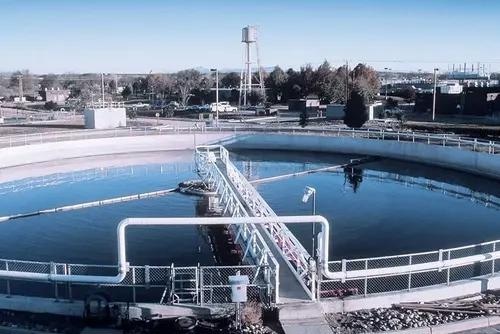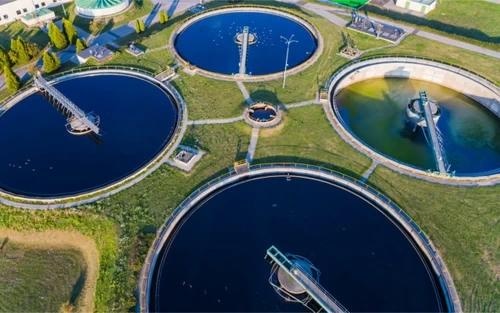To protect the planet’s natural waters and to support the production of drinking water, all wastewater must be cleansed of pollutants and contaminants before it returns to the water cycle.
Different processes are utilized for water treatment to achieve the best possible, natural water quality. In general, wastewater treatment can be categorized into two basic types.
Initially, problematic substances are eliminated from the water via cleaning, iron and manganese removal, desalination, sterilization, or softening. Subsequently, substances are specifically supplemented to enhance the quality and influence specific parameters e.g. conductivity or pH value.
The Stages of Water Treatment
Various processes can be utilized for implementing the preparation stages of water treatment, including the following:
- Biological processes, e.g. biochemical oxidation, anaerobic wastewater treatment, or sludge digestion
- Physical processes for mechanical preparation, e.g. sedimentation, aeration, or thermal influence. This also includes the use of filters, screens, and sieves.
- Membrane processes, e.g. osmosis, filtration, and nanofiltration
- Chemical processes, e.g. disinfection, neutralization, flocculation, and precipitation
Municipal wastewater treatment plants have the greatest volume of wastewater to be treated, and a more varied combination and effective procedure is required here. The procedures utilized are dependent on the type of wastewater treatment plant.
The treatment processes used in wastewater treatment plants are separated into the following stages.
Stage 1: Mechanical Water Treatment
The initial stage involves completely untreated wastewater being mechanically treated. This process eliminates approximately 20-30% of the contained solids. The wastewater is directed into a screening plant, where a screen or sieve drum filters out coarse impurities, such as paper, leaves, or textiles.

Image Credit: Aerzener Maschinenfabrik GmbH
Various screens are used, ranging from coarse screens that have several centimeters gap width to fine screens that have a gap width of just a few millimeters.
The water flows at different speeds through these screens to filter out the coarse materials. The resultant mechanically recovered screen debris is dewatered and disposed of in an incineration plant. The pre-purified water then moves into a sand collector.
In wastewater treatment technology, a sedimentation tank is employed to eliminate coarse particles, including glass splinters, stones, or sand, in addition to any coarse organic material that the screens have not filtered out. This takes place with a relatively high flow velocity of approximately 0.3 m/s.
There is a distinction between the aerated long sand collector (also referred to as a cylindrical sand collector), the non-aerated long sand collector, and the round sand collector.
The aerated long sand collector eliminates additional oils and fats from the wastewater, and the introduced process air causes a rolling motion in the water. This carries lighter substances, such as fats and oils, to the surface, allowing them to be easily removed from the water.
Using centrifugal force, a round sand collector separates substances from the wastewater and sucks them away. After the sand collector is used for cleaning wastewater, the debris is washed and freed from organic substances.
This enables better dewatering of the collected inorganic material, which may be reused in road construction. If further recycling is not possible, the sand collector debris must be correctly disposed of in a landfill or destroyed in waste incineration plants.
Subsequently, the wastewater moves to the primary wastewater treatment tank. The speed of the wastewater is approximately 1.5 cm/s, which is significantly slower than that of the sand collector.
This flow velocity reduction is carried out by a widening of the basin. A low flow velocity is required to enable the finer dirt particles to settle, depending on their nature, on the bottom or the water surface.
The sludge generated through sedimentation (settling to the bottom) is referred to as primary sludge and typically consists of organic material. Using a scraper, this primary sludge is pushed from the bottom into a fresh sludge hopper.
The floating substances are moved to a floating sludge duct, and a pump transports the fresh sludge to a digestion tower.
Methane gas is produced in the digestion tower in four phases (hydrolysis, acidification, acetone gene phase, and methanogene phase). Through this process, it is converted into electricity in a block heating plant. This energy can be used to supply the plant.
The digestion process in the digestion tower requires approximately four weeks. Subsequently, an odorless sludge remains, which is frequently used in agriculture after dewatering by filter or centrifuge.
The mechanical cleaning stage ends here. On average, between 30-40% of the water pollution is removed in this phase.
Stage 2: Biological Cleaning
In most wastewater treatment plants, the water pre-purified in the above mechanical treatment stage now reaches aeration tanks and the biological cleaning takes place.
Aeration tanks are typically designed as circulation tanks. With the help of propellers, water is put into circulation and oxygen is added. Ventilated areas are produced in which different milieu conditions are formed for bacteria and microorganisms.
These microorganisms feed on the organic contaminants that remain in the water, converting these into inorganic substances. The bacteria produce activated sludge flocks that float freely in the water.
The oxygen supply triggers the multiplication of bacteria and subsequently promotes the production of activated sludge. As a result, this process of biological wastewater treatment is called the activated sludge process.
The wastewater, containing the activated sludge, moves into the secondary wastewater treatment tank, where the flow velocity of the wastewater stream is reduced.
Sedimentation occurs as the activated sludge settles at the bottom of the purified water. Here, it can be separated from the clear water using mechanical clearing devices.
A portion of this sludge is moved to the digestion tower as additional biomass, while the rest, referred to as “return sludge”, is returned to the aeration tank to guarantee that there are sufficient microorganisms in the aeration tank to break down the dirt.
About 90% of the wastewater is cleaned of biodegradable substances after this biological treatment. The biological cleaning stage is the most energy-consuming phase in the whole cleaning process due to compressors being used to supply the oxygen.
Once the water has reached the legally required quality, it may be returned to the water cycle, such as to a river.
However, biological cleaning is not adequate in many cases and additional wastewater treatment processes are required. For instance, water preparation in the form of a chemical treatment may be required, where chemical additives are used.
Stage 3: Chemical Wastewater Treatment
Chemical processes are utilized for wastewater treatment in this stage, and chemical compounds are employed to attain legally prescribed water standard values.
The chemical treatment process in wastewater treatment plants uses disinfection, neutralization, nitrogen elimination, phosphate precipitation, deicing, and manganese removal.
Neutralization is utilized to attain the prescribed pH value, which is carried out by the addition of an acid, such as hydrogen chloride, or a base, such as milk of lime.
The disinfection process involves pathogens being killed by the addition of chlorine or chlorine dioxide. Although the irradiation of the wastewater using UV light is a good alternative to the addition of chemicals, it is used less often.

Image Credit: Aerzener Maschinenfabrik GmbH
Wastewater is often contaminated with phosphates from fertilizers, detergents, food additives, and feces.
If these phosphates remain in the wastewater, they can cause overfertilization of water bodies and enrichment with nutrients, which can result in useless plant growth (eutrophication) that is damaging to the ecosystem.
Phosphates are eliminated via a chemical precipitation or flocculation process. The phosphate precipitation is partly stimulated by adding iron salts or aluminum in either the sand collector or the secondary wastewater treatment tank.
The metal-phosphate flocks that are produced during this secondary clarification are subsequently removed from the wastewater, along with the activated sludge.
The phosphate may be "fished" using microorganisms from the wastewater, depending on the mode of operation. This involves biological phosphorus elimination, which is still infrequently used.
Chemical water purification involves the removal of nitrogen compounds that are harmful to water, such as ammonia and ammonium. Such nitrogen compounds remove oxygen from the water and can kill fish if the water is discharged into water bodies.
The removal of nitrogen is carried out via nitrification and denitrification. Nitrification involves ammonium being converted to nitrite by adding anaerobic bacteria and oxygen. In the second stage, it is converted to nitrate.
The following denitrification is initiated by adding anaerobic microorganisms. These decompose the nitrate to nitrogen gas through enzymatic activities, and this gas is subsequently returned to the atmosphere.
Deferrization is the process of reducing the iron content of the wastewater to the prescribed value. The addition of oxygen is used to oxidize Iron (II) cations, and this oxidation is triggered by the addition of caustic soda to the wastewater.
Lastly, as manganese is typically present in wastewater as manganese hydrogen carbonate, the manganese removal process takes place. Oxygen is added to produce poorly soluble manganese IV compounds, which are easy to remove from the water.
Stage 4: Membrane Processes / Nanofiltration
The final cleaning stage involves membrane and filter processes. This purification stage is partly combined with the chemical processes of flocculation and precipitation. This results in, for example, the method of flocculation filtration.
The addition of flocculants and precipitants to the wastewater leads to the flocculation of the substances that will be separated. The wastewater, containing the flocculated material, is subsequently passed through a cloth or sand filter.
The wastewater slowly seeps through the filter layer, removing even the smallest organic suspended solids.
Nanofiltration works similarly, but the water is passed under pressure through a membrane that retains even the smallest dissolved particles, including heavy metal ions and molecules.
The same result is achieved using reverse osmosis, which involves even finer membranes and higher working pressures.
The pollutants that are removed during reverse osmosis, filtration, and nanofiltration are filtered into the sludge treatment in the form of filter sludge through the primary wastewater treatment tank.
The water now moves to the treated water storage tank, the final area of the wastewater treatment plant. Water samples are taken again and the water quality is checked. The resultant purified water is only returned to the water cycle when the legally prescribed standards are satisfied.

This information has been sourced, reviewed and adapted from materials provided by Aerzener Maschinenfabrik GmbH.
For more information on this source, please visit Aerzener Maschinenfabrik GmbH.